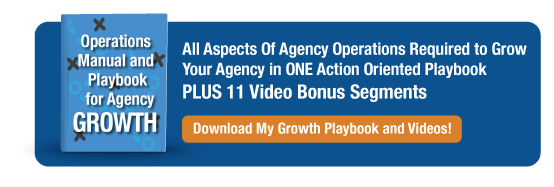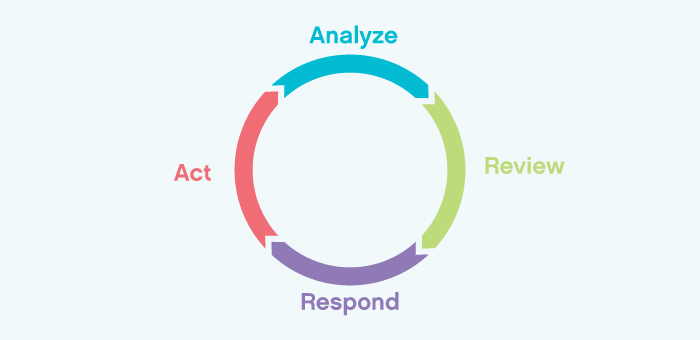 It’s an ongoing battle with clients. How do we get them better results for the level of investment in their engagement? We know we can do more, but we can’t do more because they have a budget.
It’s an ongoing battle with clients. How do we get them better results for the level of investment in their engagement? We know we can do more, but we can’t do more because they have a budget.
Some clients understand that, and others will push you to do as much as they can get you to do. Other clients, while not malicious about it, are just unclear about where to draw the line.
Over servicing isn’t the answer but better processes, systems and methodologies around delivery is the secret to getting clients better results within the limits of their engagement.
Here’s how to think differently about the way your client services and delivery teams cycle each month.
What Does Cycling Mean?
There are many activities, duties, meetings, and work that inbound agencies specifically, but many digital agencies do daily, weekly, monthly and quarterly. Some of those duties are directly related to helping clients achieve their desired results.
For example, we go into our client portals daily and weekly looking at the performance of the campaigns we’re running to see how they’re doing, provide updates to clients and potentially make adjustments. That is a cycle.
Whether you know it or not, the process described above is a cycle. It might be a natural cycle or an undefined cycle or the way one consultant does this is different than the way another consultant might do it. But these are cycles. Anything you do repeatedly could be considered a cycle.
How Does Cycling Help Get Better Results?
When done correctly, cycling can operationalize good process. Let’s look at the cycle identified in the graphic above. This is how we analyze program performance for clients. This is how everyone in the company (working on client engagements) analyzes program performance for clients.
We Analyze their results. Whatever results we’re looking at, whenever we’re looking at them starts with this Analyze step. We look at all the relevant data, connected data, and the information that supports the data.
Then we move to Review. This step is designed to give us the time to derive insights from the data. This is a tricky step and in our case Review almost always includes a number of people discussing the data and the derived insights.
Next is Respond, where we’ll take the insights and come up with recommendations or a list of potential upgrades, updates, adjustments, experiments or improvements we’re considering. This step can be complex because you typically end up with a long list of work you CAN or COULD do. This doesn’t help you to know exactly what to do. We simplify this by using a prioritization methodology that has us starting with tasks that produce the biggest potential lift for the least amount of effort.
Finally, the Act stage. Here we’ve selected the actions we want to take over the next week, two weeks or month. This becomes our action plan. Who is going to do what, by when and these are the expected results we’re looking for from the effort.
This feeds our planning for clients and we’ve found that the more you cycle like this, the better the results, but the key remains. Everyone has to know what the steps are and what’s expected of them during the process.
You could probably figure out that if you’re cycling like this once a month, you’ll produce one level of results, but if you were cycling like this weekly there is a very high likelihood that you’ll produce significantly better results.
Who Is Involved In Cycling?
As with a lot of agency consulting the answer depends largely on your agency. This includes what you do for your clients, what your team looks like, what skills you have inside the agency and what results your clients are expecting.
For example, if you’re just creating content and delivering content, then you might only be cycling to produce content faster or content that is better as judged by your clients. The answer there is going to be different than if your agency is doing 10 different tactics each month and the goal is to generate leads.
You want the people involved in the engagement to be part of the cycling session. You want the smartest people in the agency, and you want to make sure that there are people there who can look at data, derive insight and then turn that insight into actionable recommendations.
In my experience, that skill set (turning insight into recommendations) is hard to find. In most cases, you might be the only one who can do this. Doing this with your team is an excellent way to train them to think critically about their engagements.
How To Build Your Own Cycling Methodology?
I’m not sure it’s important exactly what you do, but that you do something. Perhaps a simple account review session with key team members is enough to start. What have we been doing? What are the results? What can we do better? What do we expect the results to be? Who can work on it? That might be enough and if you’re not doing that now, anything you do will produce better results.
This is especially relevant if you’re a small team and you work on a lot of client stuff together. You don’t need the cycling methodology my team uses on their own, because you’re going to be at all the sessions. You can literally teach your team what you want, as you go. You are refining it over time.
What I would suggest is that instead of making this an academic exercise that you do on paper and then try to apply it with clients, just start doing it for your actual clients and make updates to it based on the improvements realized with those clients.
What Tools Help Make Cycling Productive?
The obvious answer here is the data. There are tons of data analytics and dashboards that can be leveraged to help you run these cycles. Custom dashboards probably represent the best opportunity to put data next to each other and look at them objectively.
For example, short term comparisons around marketing program performance can be tricky. If you’re looking at performance weekly, sometimes it’s hard to see trends, but when you look at it over a longer period of time, typically 13 months, trends can emerge, insights appear, and your action plan gets clearer. Dashboards make this easier.
However, experience is really the key ingredient in knowing what to look for, what the data is telling you and what to do about it. New tools like artificial intelligence software and other more powerful tools are starting to make this easier.
MAXG, for example, is our artificial intelligence powered insights and recommendations engine that is a big part of our cycling methodology. Without even doing a thing, MAXG provides our teams with insights and recommendations around email campaigns, list degradation, blogging efficiency, CTA performance, landing pages and more.
Our teams show up at those meetings with the recommendations in hand and after evaluating them, it typically comes down to what’s going to produce the best results. Those meetings are short, efficient and data-driven.
The key to highly efficient agency operations is creating systems and processes. The more system and processes the more efficient the agency. The more systems and processes, the easier it is to change things across the agency with one move or adjustment.
But these have to be built first, they have to be installed, tested and optimized as needed. It’s likely that you’ll find places across your entire agency for processes to be used in this way.
If everyone is doing it differently or if you’re figuring it out every time for the first time, you’re going to notice a lot of service inconsistency and an inconsistency in your ability to get your clients the results they expect.
While this cycling around results is one of the processes we use, there are many, many more at Square 2 and you need to identify, install and test systems, processes and methodology at your agency on a regular basis.
 Start Today Tip – If you’re wanting to know where to start, then my advice is wherever the pain is the most acute. Is onboarding new clients particularly challenging? Is it reviewing the performance of their programs? Is it overachieving on their expectations around results? Are your teams over servicing? Whatever the issue, start there. Install a new process, train everyone, document it and run through it with them a few times. Then after a reasonable amount of time, check back to see if the pain has been removed. It’s possible new pains have been uncovered. Just keep working through all your processes and keep optimizing them over time until you see the business results you’re looking for. Better client results, happier clients, more efficient engagements, higher profits. Be patient. This is something you’ll likely be working on every month.
Start Today Tip – If you’re wanting to know where to start, then my advice is wherever the pain is the most acute. Is onboarding new clients particularly challenging? Is it reviewing the performance of their programs? Is it overachieving on their expectations around results? Are your teams over servicing? Whatever the issue, start there. Install a new process, train everyone, document it and run through it with them a few times. Then after a reasonable amount of time, check back to see if the pain has been removed. It’s possible new pains have been uncovered. Just keep working through all your processes and keep optimizing them over time until you see the business results you’re looking for. Better client results, happier clients, more efficient engagements, higher profits. Be patient. This is something you’ll likely be working on every month.
Agencies 2 Inbound - Focusing On Helping Agencies Who Want To Grow


